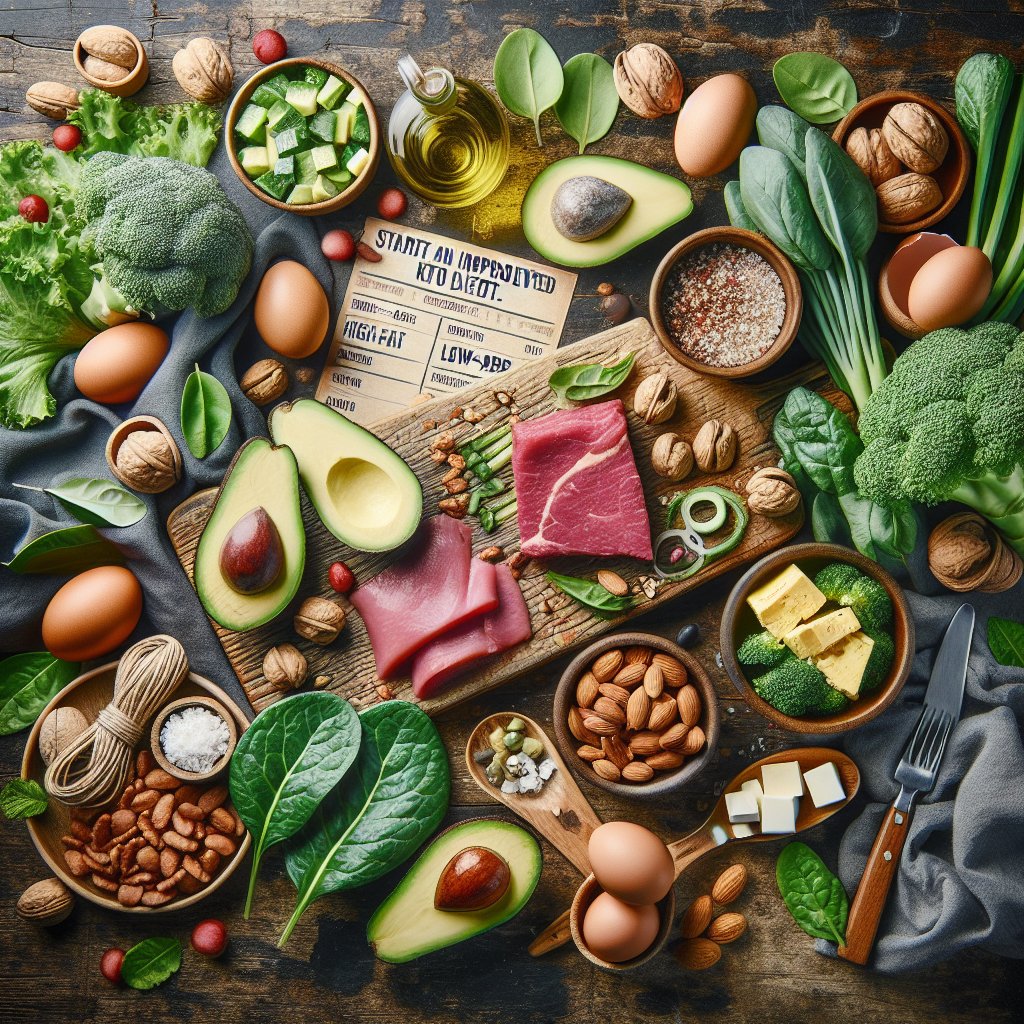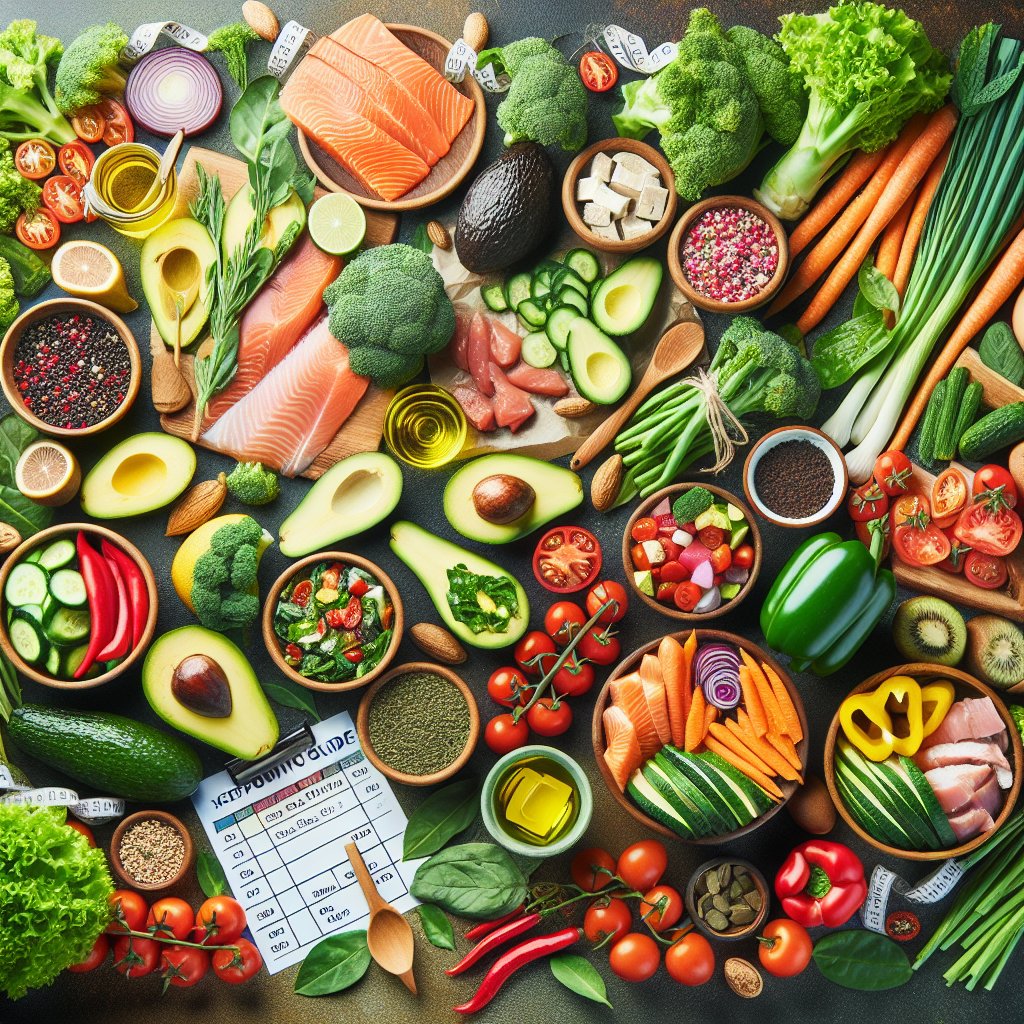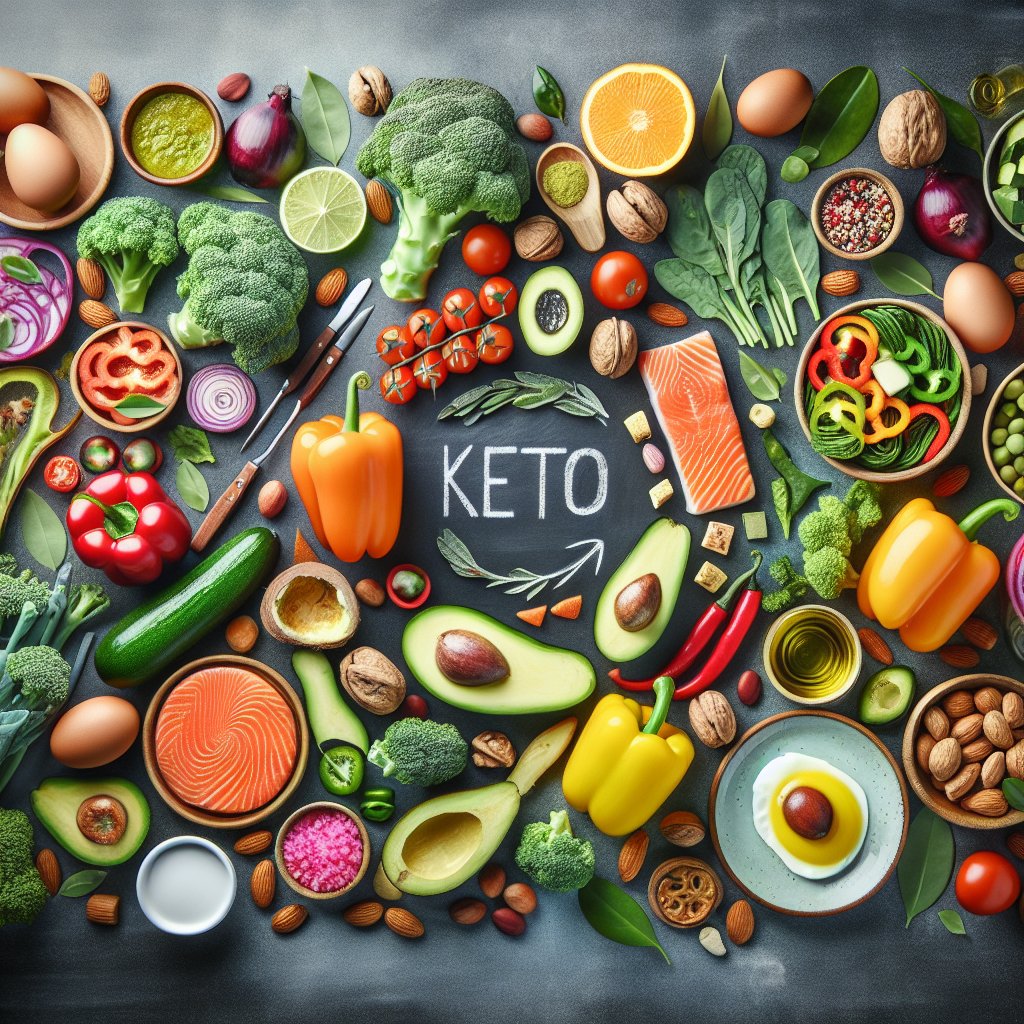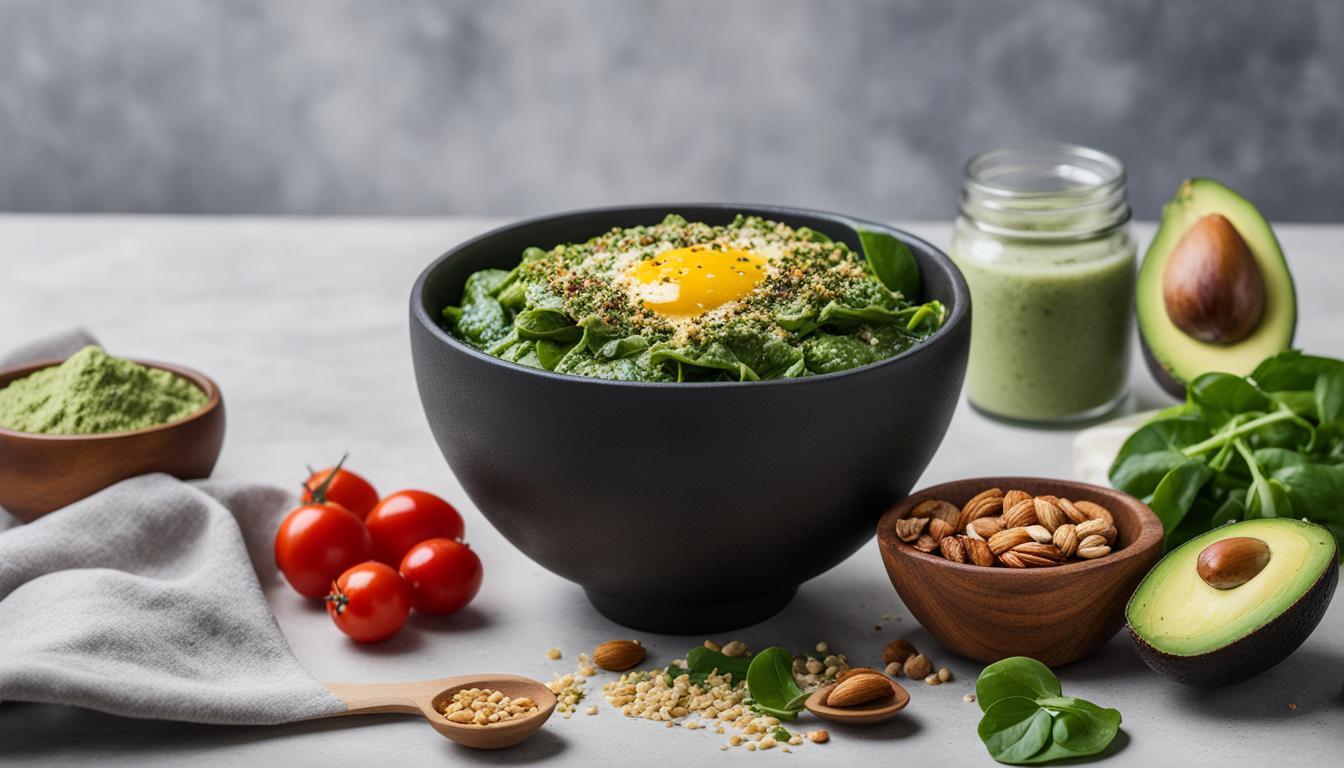Start Your Keto Journey for Free: A Step-by-Step Plan to Kick-Start Your Keto Diet Adventure
Introduction to Keto Diet
Welcome to the start of an incredible journey towards a healthier and more energetic you! The ketogenic diet, or keto diet, has gained massive popularity for its effective weight loss and health improvement benefits. But what exactly is the keto diet, and how does it work? Let’s delve into the principles and mechanisms behind this transformative way of eating.
What is the Keto Diet?
The ketogenic diet is a high-fat, adequate-protein, low-carbohydrate eating plan. Its primary goal is to induce a state called ketosis in the body. Ketosis is a natural metabolic state where the body burns fat for fuel instead of carbohydrates. When you consume a very low amount of carbs, your body produces ketones in the liver, which are used as energy. This shift in metabolism can have numerous benefits, ranging from weight loss to improved blood sugar control and enhanced mental clarity.
Principles and Mechanisms
So, how does the keto diet work its magic? By significantly reducing carb intake and increasing fat consumption, the body is forced to switch from using glucose as its primary fuel source to using fat and ketones. This not only leads to efficient fat burning and weight loss but can also bring about other health improvements, such as reduced inflammation, increased HDL cholesterol (the good kind), and better insulin sensitivity.
Research has shown that the keto diet can be particularly effective for weight loss, as it helps to suppress appetite and regulate hormones that control satiety. Furthermore, the reduction in carb intake leads to a dramatic decrease in blood sugar and insulin levels, which can have profound effects on individuals with type 2 diabetes or prediabetes.
By understanding the principles and mechanisms behind the keto diet, you can feel confident in embarking on this journey towards a healthier lifestyle. Now, let’s explore how you can kick-start your free keto diet plan and begin your incredible transformation!

Benefits of Keto Diet
So, you’ve decided to take the plunge and embark on your keto journey, but what exactly are the benefits awaiting you on this exciting adventure? Well, buckle up because we’re about to dive into the amazing health benefits of following a keto diet. From weight loss to improved energy levels, mental clarity, and blood sugar control, the perks are truly endless.
Weight Loss
Let’s talk about everyone’s favorite benefit – weight loss! Research has shown that the ketogenic diet can be highly effective for weight loss. A study published in the Journal of Clinical Endocrinology and Metabolism revealed that individuals on a ketogenic diet lost 2.2 times more weight than those on a calorie-restricted low-fat diet. By inducing ketosis, your body becomes a fat-burning machine, torching those stubborn pounds while still keeping you feeling satiated and satisfied. Who knew weight loss could be this delicious?
Improved Energy Levels
Say goodbye to the mid-afternoon energy slumps! When you transition to a keto lifestyle, your body switches from using glucose as its primary fuel source to burning fat for energy. This results in a more stable energy supply throughout the day, helping you bid farewell to those pesky energy crashes. A study in the Journal of Sports Science and Medicine found that athletes following a ketogenic diet exhibited enhanced endurance performance due to their increased reliance on fat for fuel. So, for all the busy bees out there, get ready to feel energized and revitalized throughout the day!
Mental Clarity
Ever feel like your brain could use a little boost? Well, welcome to the world of mental clarity on keto! Research published in the European Journal of Clinical Nutrition suggests that the ketogenic diet may have a positive impact on cognitive function. By providing a consistent source of energy to the brain through ketones, many individuals report heightened focus, improved concentration, and mental sharpness. Say hello to clear thinking and wave goodbye to brain fog!
Blood Sugar Control
Now, let’s touch on something that is incredibly important for overall health – blood sugar control. For individuals with type 2 diabetes or those prone to blood sugar fluctuations, the keto diet can be a game-changer. A study in the Journal of Nutrition & Metabolism noted that the ketogenic diet led to improved glycemic control and a reduction in medication use for patients with type 2 diabetes. By minimizing carbohydrate intake and regulating insulin levels, the ketogenic diet can help stabilize blood sugar levels, promoting overall health and well-being.
In conclusion, the benefits of the keto diet are truly remarkable. From shedding those extra pounds to experiencing sustained energy, enhanced mental clarity, and better blood sugar control, there are numerous reasons to kick-start your keto journey right away. So, if you’re ready to embrace a lifestyle that not only nourishes your body but also empowers your well-being, then it’s time to take the leap into the wonderful world of keto!
Getting Started with a Keto Diet
So, you’re ready to embark on an exciting journey with the ketogenic diet! Congratulations on taking the first step towards a healthier, low-carb lifestyle. Starting a keto diet for free is not only beneficial for weight loss but also provides potential health benefits like improved blood sugar control and enhanced mental focus [1].
Calculating Macros
The first essential step in starting a keto diet is to calculate your macros. Macronutrients, or “macros,” refer to the three main components of food: fat, protein, and carbohydrates. On a ketogenic diet, the primary goal is to significantly reduce carb intake and replace it with fat. To do this, you’ll need to calculate your specific macronutrient needs.
An ideal macro breakdown for a standard keto diet typically involves consuming 70-75% of your daily calories from fat, 20-25% from protein, and 5-10% from carbs [2]. Various online calculators and apps are available to help you determine your personalized macronutrient ratios based on factors such as your age, weight, height, activity level, and desired weight goals.
Planning Meals
Once you have your macro goals in mind, the next step is to plan your meals accordingly. One of the best tips for starting a keto diet for free is to focus on whole, low-carb foods. Stock up on non-starchy vegetables like leafy greens, broccoli, cauliflower, and zucchini, along with high-fat dairy products, avocados, nuts, seeds, and healthy oils. These foods will form the foundation of your keto meal plans.
Coming up with simple yet delicious meal ideas will make your transition to the keto lifestyle much smoother. Consider preparing meals in advance to avoid last-minute temptations and to stay on track with your macronutrient goals. Look for budget-friendly recipes and meal prep tips to make the process more efficient and cost-effective.
Incorporating Low-Carb Foods
As you navigate through the initial stages of your keto diet, it’s important to learn about low-carb food alternatives to replace your usual carb-heavy choices. For instance, substitute traditional pasta with zoodles (zucchini noodles) or explore the wide variety of cauliflower-based products in place of rice and pizza crust. Finding creative ways to incorporate low-carb foods into your meals can make the diet transition enjoyable and sustainable without breaking the bank.
Remember, starting a keto diet for free doesn’t have to be overwhelming. Embrace your journey with enthusiasm. With proper planning, smart shopping, and a bit of creativity, you can kick-start your keto adventure without splurging on expensive specialty items or meal plans. Enjoy the process and savor the delicious flavors of your newfound low-carb lifestyle!
References:
[1] – “The effect of the ketogenic diet on glycemic control in patients with type 2 diabetes mellitus.” – PubMed
[2] – “Effects of a 6-week, very-low-carbohydrate diet on metabolic control and variability in type 2 diabetes.” – NCBI

Start Your Keto Journey for Free: A Step-by-Step Plan to Kick-Start Your Keto Diet Adventure
Free Keto Diet Plan
So you’ve decided to embark on the exciting journey of the ketogenic diet! Congratulations on taking this positive step towards a healthier lifestyle. To help you get started, I’ve put together a simple and accessible keto diet plan tailored for beginners, complete with meal ideas, recipes, and a shopping list to simplify your transition into ketosis.
Sample Free Keto Diet Plan for Beginners
Day 1
Breakfast:
– Fluffy Keto Pancakes
– Topped with sugar-free syrup and a side of strawberries
Lunch:
– Grilled Chicken Caesar Salad
– Dressing made with olive oil and parmesan cheese
Dinner:
– Zucchini Noodles with Pesto and Cherry Tomatoes
– Grilled Salmon
Day 2
Breakfast:
– Crustless Quiche with Spinach and Feta
– Avocado slices on the side
Lunch:
– Turkey and Cheese Roll-Ups
– Lettuce leaves as wraps, with a side of mixed nuts
Dinner:
– Cauliflower Crust Pizza
– Topped with your favorite low-carb veggies and cheese
Recipes
Fluffy Keto Pancakes
Ingredients:
– Almond flour
– Eggs
– Baking powder
– Almond milk
– Vanilla extract
Instructions:
1. In a bowl, combine almond flour, eggs, baking powder, almond milk, and vanilla extract.
2. Cook pancakes on a non-stick pan over medium heat until golden brown.
Zucchini Noodles with Pesto and Cherry Tomatoes
Ingredients:
– Zucchini
– Cherry tomatoes
– Pesto sauce
– Olive oil
– Parmesan cheese
Instructions:
1. Spiralize the zucchini into noodles.
2. Sauté the zucchini noodles and cherry tomatoes in olive oil.
3. Toss with pesto sauce and top with parmesan cheese.
Shopping List
Your shopping list for this beginner’s keto meal plan will include items such as almond flour, eggs, almond milk, zucchini, cherry tomatoes, pesto sauce, chicken, salmon, turkey, cheese, spinach, lettuce, avocado, and nuts. Don’t forget to stock up on keto-friendly staples like olive oil, parmesan cheese, and sugar-free syrup.
With this sample keto diet plan, delicious recipes, and a simple shopping list, you’re well on your way to starting your keto journey for free. Remember, the key to success is to stay consistent, stay positive, and enjoy the process. Happy keto cooking!
Keto-Friendly Foods: Enjoying a Variety of Delicious Options
Starting your keto journey is an exciting adventure, and one of the best parts is discovering a whole new world of delicious, keto-friendly foods. Embracing the ketogenic lifestyle doesn’t mean sacrificing taste; it means exploring a whole new palette of flavors. Here’s a list of foods you can enjoy while staying in ketosis and some to avoid to keep you on track.
Enjoy These Keto-Friendly Foods
1. Healthy Fats: Avocado, olive oil, coconut oil, and grass-fed butter are excellent sources of healthy fats to include in your keto diet.
2. Low-Carb Vegetables: Leafy greens, broccoli, cauliflower, zucchini, and bell peppers are great choices due to their low-carb content.
3. Proteins: Fatty fish like salmon, tuna, and trout, as well as grass-fed meats and eggs, are fantastic sources of protein that align with the keto diet.
4. Nuts and Seeds: Almonds, chia seeds, and flaxseeds are not only high in healthy fats but also low in net carbs, making them perfect for keto snacking.
5. Dairy: Cheese, Greek yogurt, and unsweetened almond milk can be consumed in moderation due to their low-carb content.
Foods to Avoid to Stay in Ketosis
While there’s a wide range of delicious foods to enjoy on a ketogenic diet, it’s essential to be mindful of the foods that could knock you out of ketosis. Here are a few items to avoid:
1. High-Sugar Fruits: Fruits such as bananas, apples, and grapes are high in sugar and can exceed your daily carb limit if consumed in large quantities.
2. Starchy Vegetables: Potatoes, sweet potatoes, and carrots are high in carbohydrates and best avoided on a keto diet.
3. Grains and Legumes: Wheat-based products, rice, oats, and legumes like lentils and chickpeas are rich in carbs and not ideal for ketosis.
By building your meals around the keto-friendly foods and avoiding those that can hinder your progress, you can embark on your keto journey with confidence, exploring a wide variety of delicious and nutritious options.

Tips on Staying Motivated and Overcoming Challenges
Congratulations on embarking on your keto journey! Starting any new diet can be both exciting and challenging. The ketogenic diet, in particular, comes with its own set of unique hurdles and adjustments. Here are some practical tips to help you stay motivated and overcome common challenges when starting a keto diet.
Dealing with Cravings
Cravings are a common obstacle when starting a keto diet, especially if you’re used to consuming a high-carb diet. The good news is that as your body adjusts to using fat for fuel instead of carbohydrates, these cravings tend to diminish. In the meantime, here are some strategies to help you power through:
- Focus on consuming satiating foods such as avocados, nuts, and fatty fish to keep you feeling full and satisfied.
- Drink plenty of water and herbal teas to stay hydrated and curb cravings.
- Try incorporating naturally sweet flavors from berries or monk fruit sweetener into your meals to satisfy your sweet tooth without sabotaging your ketosis.
Handling Social Situations
Attending social gatherings or dining out with friends and family can present challenges, especially if the majority of the fare being served is high in carbs. Here’s how you can navigate social situations while staying true to your keto goals:
- Communicate with your friends and family about your dietary choices so they can support and accommodate your needs.
- Offer to bring a keto-friendly dish to share, ensuring there’s something you can enjoy at social events.
- Scan the menu ahead of time when dining out and don’t hesitate to ask the waiter for modifications to suit your keto requirements.
Dealing with Potential Side Effects
As your body adapts to using fat as its primary fuel source, you may experience some temporary side effects, commonly known as the “keto flu.” The symptoms, such as fatigue, headaches, and irritability, typically subside within a week or two. To mitigate these side effects:
- Stay well-hydrated and ensure you are consuming enough electrolytes by adding salt to your meals or drinking bone broth.
- Get plenty of rest and practice stress-reducing activities such as yoga or meditation to support your body during this transition.
- Be patient with yourself and remember that these side effects are temporary. Focus on the long-term benefits of the ketogenic diet to stay motivated.
Remember, everyone’s keto journey is unique, and it’s okay to face challenges along the way. By staying informed, seeking support, and maintaining a positive mindset, you can overcome these obstacles and thrive on your keto adventure.
Exercise and Supplements on Keto
So, you’ve decided to embark on a keto journey. Awesome choice! To maximize your results and overall health benefits, let’s delve into how exercise and supplements can complement your keto diet.
Exercise and Ketosis
Engaging in regular physical activity can greatly enhance your keto experience. Studies have shown that exercise can promote ketosis, the metabolic state in which your body uses fat for fuel instead of carbohydrates. When you exercise, your muscles deplete their glycogen stores, which helps your body transition into ketosis more efficiently.
Moreover, exercise can help with weight management, enhance insulin sensitivity, and improve overall cardiovascular health, all of which are especially crucial for those following a keto lifestyle.
Types of Exercise
While on a keto diet, incorporating a mix of aerobic and resistance training can be highly beneficial. Aerobic exercise, such as walking, jogging, or cycling, can help increase fat burning. On the other hand, resistance training, including weight lifting and bodyweight exercises, supports muscle maintenance and development, which is essential for a healthy metabolism.
Supplements to Consider
When it comes to supplements on a keto diet, there are several options that can enhance your journey:
Electrolytes: As your body shifts into ketosis, it tends to excrete more water and electrolytes. Supplementing with electrolytes like sodium, potassium, and magnesium can help prevent the “keto flu” and support proper hydration.
MCT Oil: Medium-chain triglycerides (MCTs) are fats that are rapidly converted into ketones, making them a popular supplement for those on a keto diet. They can provide a quick source of energy and support ketosis.
Collagen Peptides: Collagen is a vital protein for connective tissues, skin, and joint health. Adding collagen peptide supplements to your keto routine can aid in tissue repair and recovery, especially after exercise.
Exogenous Ketones: These supplements can provide a quick source of ketones, which may help support energy levels and mental clarity, especially during the initial stages of transitioning to a keto diet.
Before incorporating any new supplements, it’s always a good idea to consult with a healthcare professional, especially if you have any underlying health conditions or are taking medications.
By combining the power of exercise and strategic supplementation with your keto journey, you can enhance your results and overall well-being, making the adventure even more rewarding!

Monitoring Progress and Adjusting the Plan
So, you’ve embarked on this exciting keto journey, and now it’s time to ensure you’re on the right track. Monitoring your progress is crucial to understanding how your body is responding to the ketogenic diet. Here’s your complete guidance on how to monitor progress while following a keto diet and making necessary adjustments to the plan.
Tracking Weight Loss
One of the most common ways to monitor progress on a keto diet is by tracking your weight loss. While it’s important to remember that weight is not the only indicator of progress, it can still be a helpful tool. Scientific studies have shown that a ketogenic diet can lead to greater weight loss compared to other diets. Monitoring your weight on a weekly basis can provide valuable insights into the effectiveness of your dietary changes. Remember, individual weight loss patterns can vary, so be patient and consistent with your tracking.
Tracking Energy Levels
Energy levels are an essential aspect of monitoring progress on your keto journey. Many people report an increase in energy and overall well-being after adapting to a ketogenic diet. According to research published in the Journal of Nutrition and Metabolism, a keto diet may enhance physical endurance and increase energy levels. By keeping a journal or simply being mindful of your energy throughout the day, you can gain an understanding of how the diet is impacting your vitality. If you notice a significant improvement or decline in your energy levels, this can guide you in making necessary adjustments to your plan.
Overall Well-being
Aside from weight loss and energy levels, monitoring your overall well-being is essential. The ketogenic diet has been associated with various health benefits, including improved mental clarity and reduced inflammation. Pay attention to how you feel both physically and mentally. Are you experiencing better mental focus? Are there any improvements in any existing health conditions? By keeping track of these non-scale victories, you can gauge the holistic impact of the keto diet on your well-being.
Adjusting the Plan
Based on the data you’ve collected, it’s time to make necessary adjustments to your keto plan. If you’re not seeing the desired weight loss, consider reassessing your macronutrient intake. Research indicates that adjusting macronutrient ratios, such as increasing fat intake or moderating protein consumption, can influence weight loss outcomes on a ketogenic diet.
If your energy levels are inconsistent, you might want to evaluate your electrolyte balance. According to studies in the American Journal of Clinical Nutrition, electrolyte imbalances can contribute to fatigue and reduced physical performance. This could mean increasing your intake of magnesium, potassium, and sodium through food sources or supplements.
Finally, to enhance your overall well-being on keto, ensure you’re consuming a variety of nutrient-dense foods. Incorporate plenty of non-starchy vegetables, healthy fats, and quality sources of protein into your meals. These adjustments can support your body’s nutritional requirements and contribute to your overall wellness while following the ketogenic diet.
Remember, everyone’s body responds differently to dietary changes, so be open to modifying your plan based on your unique progress and experiences. By monitoring your weight loss, energy levels, and overall well-being, and making necessary adjustments to the plan, you’re actively participating in your keto journey and setting yourself up for success.
Conclusion: Start Your Keto Journey for Free
Congratulations on taking the first step towards a healthier lifestyle with the keto diet! Embracing this journey doesn’t have to be daunting or expensive. In fact, starting a keto diet for free is not only achievable but also empowering. Let’s recap the key points we’ve covered to kick-start your keto adventure without breaking the bank.
Focus on Whole, Affordable Foods
One of the best ways to start your keto journey for free is by focusing on whole, affordable foods. Opt for budget-friendly ingredients like eggs, spinach, cabbage, cauliflower, and avocados, which are not only nutritious but also versatile for creating delicious keto-friendly meals. Remember, the key is to keep it simple and sustainable!
Embrace Intermittent Fasting
Intermittent fasting can be a powerful tool in your free keto plan. This approach doesn’t cost a dime and can greatly enhance your body’s ability to enter ketosis. It’s not just about what you eat, but also when you eat. Experiment with different fasting windows to find what suits your lifestyle best.
Leverage Free Online Resources
Take advantage of the plethora of free resources available online. From keto recipe blogs to YouTube cooking tutorials, there’s a wealth of information at your fingertips. Join keto communities on social media platforms to connect with others on the same journey. Share tips, ask questions, and find inspiration without spending a cent!
Stay Active and Hydrated
Physical activity and proper hydration are fundamental pillars of a healthy lifestyle, and they come at no cost. Regular exercise, even if it’s just a brisk walk or a home workout, can complement your free keto plan by improving your overall well-being. Remember to drink plenty of water to support your body as it adapts to the keto lifestyle.
Mindset and Self-Care
Lastly, remember that embarking on a keto journey is not just about physical changes, but also about mindset and self-care. Practice gratitude, mindfulness, and self-compassion on this free keto adventure. Celebrate every small win and be kind to yourself throughout the process.
Starting a keto diet for free is an incredibly liberating experience. It’s about nourishing your body, exploring new flavors, and embracing a sustainable approach to wellness without breaking the bank. Remember, the most valuable investment in this journey is your commitment to your health and well-being. So, seize the opportunity, stay positive, and enjoy the transformative ride ahead!
Here’s to your exciting and fulfilling keto journey!


